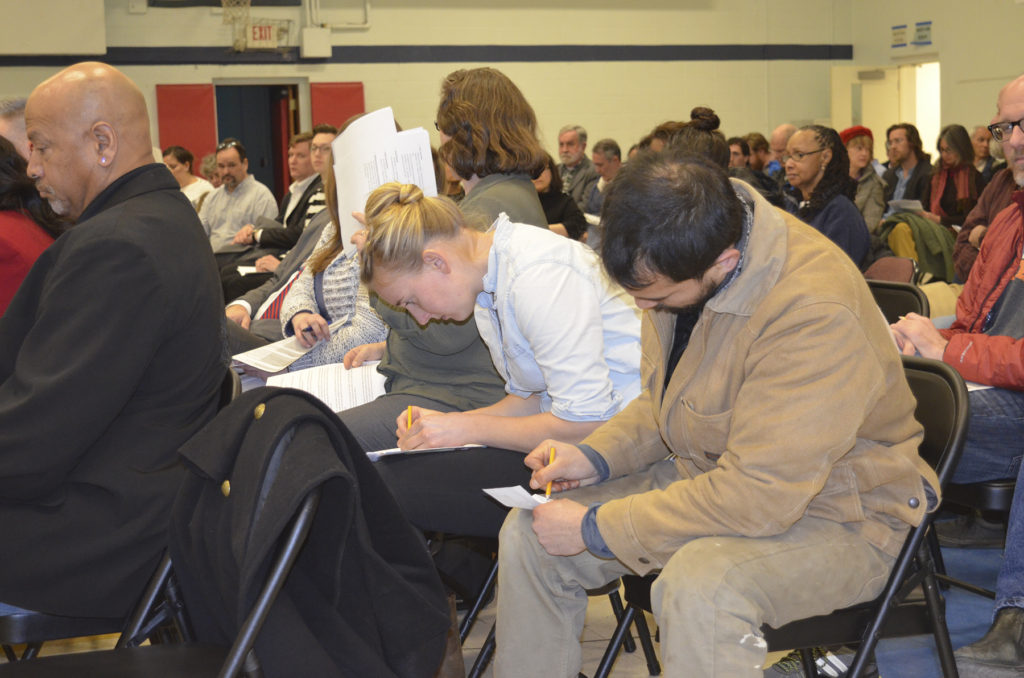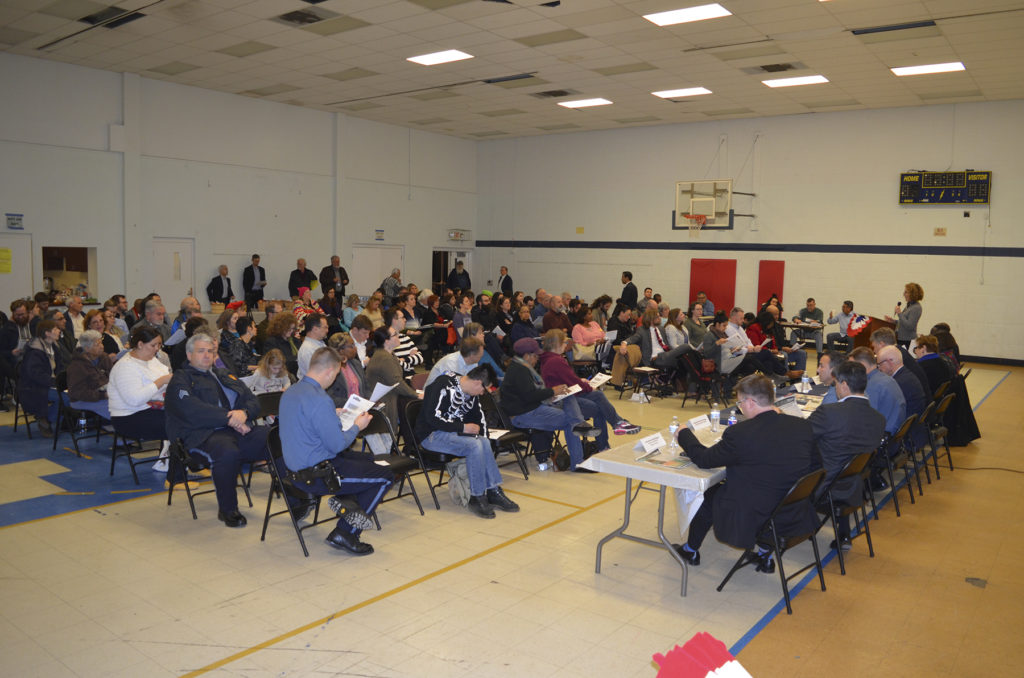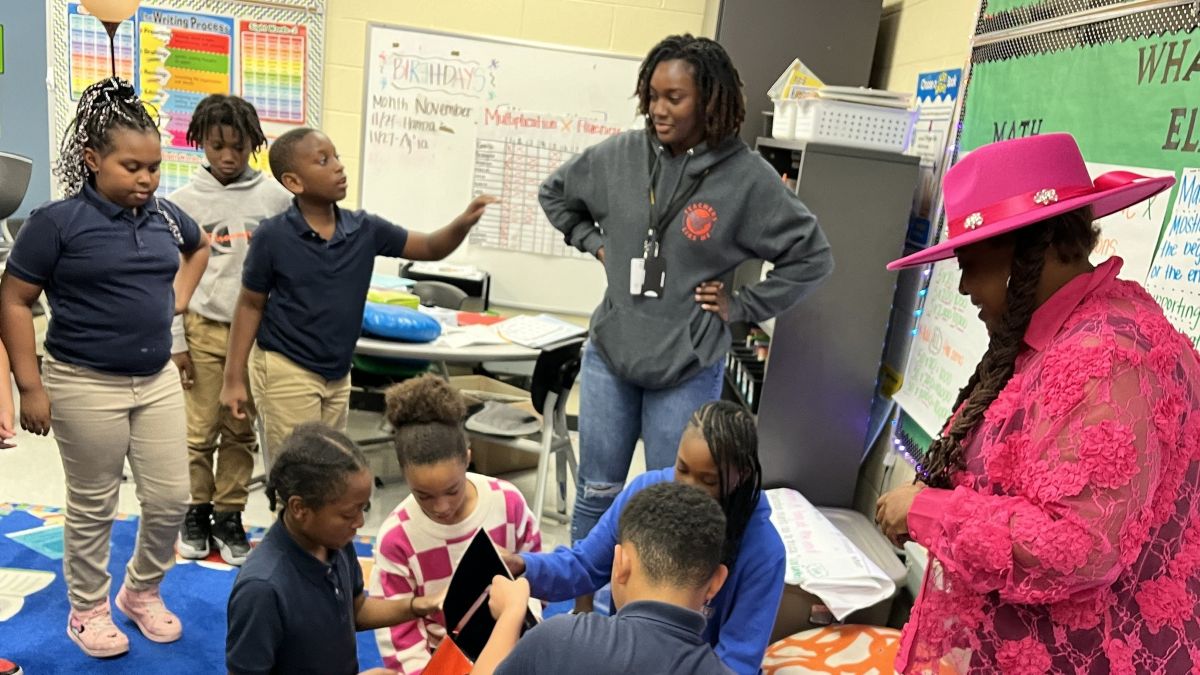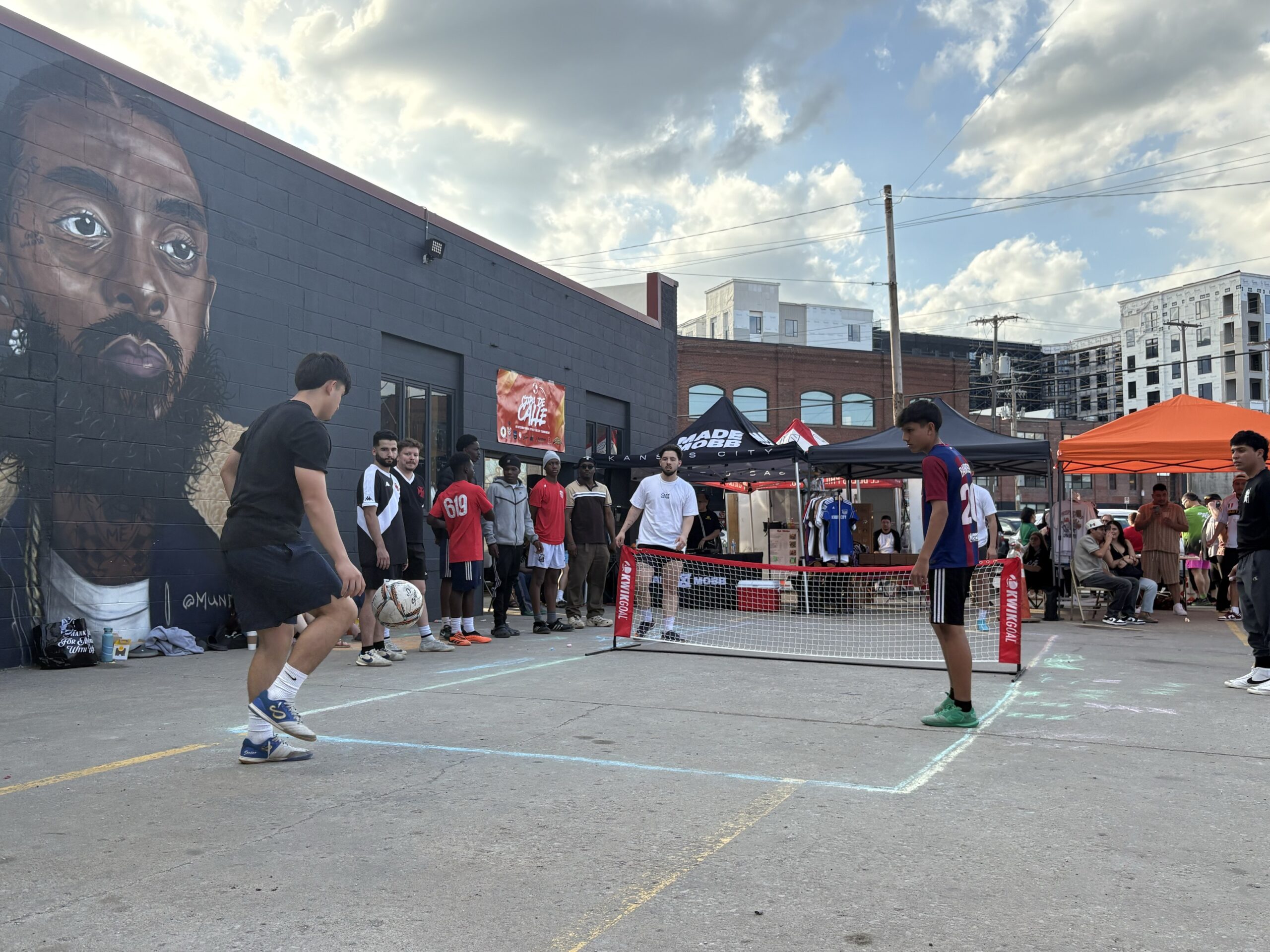Northeast News
On the night President Donald Trump addressed the nation with his first State of the Union address, nearly a dozen Kansas City political and law enforcement leaders participated in a State of the Northeast Forum inside the packed gymnasium of Our Lady of Peace church.
More than 100 area residents turned up to get some face time with influential Kansas Citians such as Chief of Police Rick Smith; City Manager Troy Schulte; City Council members Scott Wagner (1st District), Quinton Lucas and Jermaine Reed (3rd District), Jolie Justus and Katheryn Shields (4th District); East Patrol Major Jim Thomas; COMBAT Director Vince Ortega; and John Burnett, who appeared as a representative of wife and District 19 State Representative Ingrid Burnett, who is currently in session in Jefferson City.
The event was organized by local non-profit Northeast Alliance Together (NEAT), which is based out of the Mattie Rhodes Center (148 N. Topping). NEAT, which is focused on providing resources, improving communications, and presenting unified strategies on behalf of the area, collaborated on the event with the six neighborhoods that represent the Historic Northeast: Independence Plaza, Indian Mound, Lykins, Pendleton Heights, Scarritt Renaissance, and Sheffield.
“NEAT does a lot of things, but one of the things we do is advocate for the Northeast,” said Mary Cyr, Director of NEAT. “Part of that is maintaining good communication and awareness with our public officials.”
One impetus for the forum was a survey published by a Northeast News precursor (The Northeast World) in 1988. Present day neighborhood leaders noticed that many of the questions from the 12-question survey yielded responses that reflected issues still relevant to the Northeast 30 years later. One of the key takeaways from the 1988 study – as well as a 2018 study conducted on social media using the same questions – was the importance of collaboration between the six neighborhoods that make up the Historic Northeast.
The State of the Northeast Forum, then, was conceived as a way for area residents to present that unified front to Kansas City leaders with the power to make a difference. Referencing the State of the Union address that would follow the forum, 3rd District Councilman Jermaine Reed echoed the need for collaboration by noting the importance of focusing on local concerns.
“I think it’s more important to come hear about our own neighborhoods,” Reed said.
One of the first questions addressed during the forum revolved around Kansas City’s residential demolition program for vacant and abandoned lots. Councilman Lucas noted that broad inventory of dangerous homes conducted by the city, while Councilwoman Justus pointed to the benefits of the city’s “robust” private partnerships. City Manager Schulte said that the City is close to a deal that would incentivize developers to take down vacant properties. Schulte also pointed to the success of the City’s $10 million dangerous buildings demolition program, which began in May of 2016 with 877 houses. Though that original list has been whittled down to single digits, Schulte acknowledged that the problem with vacant homes persists: he stated that roughly 300 new homes have been added to the list since the demolition program kicked off.
On issues of drug abuse and violent crime in the Northeast, East Patrol Major Jim Thomas urged residents to keep working with police to identify criminals. He added that a crime analyst instituted at East Patrol has helped identify some of the biggest issues in the area, and hinted that the department is working towards potential technological improvements in the Northeast.
“We don’t have ShotSpotter in the Northeast,” said Thomas of the technology that can pinpoint the location of gunfire. “That’s something that we’re kind of working on now.”
Councilwoman Katheryn Shields addressed a question regarding the Council’s dedication to finding infrastructure solutions in the Northeast. Shields suggested that she has pushed the city to prioritize General Obligation Bond dollars that have been dedicated for street repair.
“I’m really advocating on the Council that we look to spend that money on streets as quickly as possible, because the street conditions don’t stay static,” Shields said.
Councilman Lucas was the first to address a question about housing and health care needs in the area. In doing so, Lucas pulled memories from his own childhood to advocate for sales tax abatements for new projects that have incentives set aside for new housing.
“I grew up in rental housing,” Lucas said. “I want to make sure that children don’t find themselves in motels, or homeless, or any of those other things.”
Lucas was followed by Councilman Wagner, who pointed to the City’s success tackling veteran homelessness as a housing victory. According to Wagner, Kansas City has been certified as a city that can ind housing for homeless veterans within 90 days. Though Wagner also touted the City’s involvement in opening the Kansas City Assessment and Triage Center at 12th and Prospect, he conceded that mental health is an issue for which there is no simple solution.
“Sometimes you have to get with someone not just one time, but 10 times, 20 times, 50 times,” Wagner said.
After the Q&A session, each Northeast neighborhood was afforded an opportunity to address the forum panelists by presenting their own unique goals and concerns. Stated goals from the neighborhoods included growing their organizations, receiving increased funds from the City outside of PIAC requests, continuing partnerships with private entities, attracting viable new businesses, addresses ongoing issues related to crime and poverty, continuing the process of building robust and diverse block watches, getting more City funds dedicated to police department enforcement activities, and much more.
The meeting concluded with a call to action. Organizer Mary Cyr asked the panelists to work on behalf of the Northeast to address issues like mental health, efforts to remove or improve the troublesome recycling facility at 12th and Spruce, how to resolve the high concentration of poverty in the Northeast, and what the City can do to solve high unemployment in the area.
Lucas addressed the high concentration of poverty in the Northeast.
“We’re not trying to push them out,” Lucas said. “The real question is how to create more opportunities in the areas that they live in?”
Lucas added that people all over the city are in dire need of additional resources to make their lives better. He said that he wants to work to make sure those resources are available in the “far reaches” of the city, but noted that the 3rd District is happy to welcome anybody who doesn’t feel they can get those resources where they currently live.
“I don’t want to kick anybody out of the third district,” Lucas said. “In fact, I want people to move to the third district.”
Justus took on the issue of rising unemployment, suggesting that the City needs to do more attract business development closer to the city. She also said that diversity and inter-connectivity are a benefit for all portions of the city.
“These issues are completely integrated. The beauty of our neighborhoods is our diversity, and diversity includes socioeconomic status,” Justus said. “When I say connected, I don’t mean by just roads.”
Though only a small portion of the questions submitted by forum attendees were able to be discussed publicly, the Northeast News has compiled and published each question below:
 1.Why is it that big business development almost always trumps the residents’ opinions and historic structures are demolished with little regard for what they represent and the value they add?
1.Why is it that big business development almost always trumps the residents’ opinions and historic structures are demolished with little regard for what they represent and the value they add?
2. How are you working to:
a) Protect the housing for people of all income brackets, especially those of lower incomes in the Northeast?
b) To promote enterprises that are ecologically responsible and economically redistributive and committed to anti-oppressive libertarian practices?
3. How can Northeast residents work with the city to prepare for the large investment in the Hardesty Renaissance Project and the speculative real estate activity that may displace the lower-income residents?
4. Regarding the attraction of large scale companies to the Northeast, have you tried attracting business of entry level to senior level? And if not, why? If so, what can we do, as a community, to assist in attracting those businesses such as call center or industrial types?
5. What actions are being taken to reduce the enmity between law enforcement officials and civilians?
6. Given ongoing budget restraints on providing quality maintenance on infrastructure, how can the city curtail adding to the maintenance needs and encourage reinvestment and urban concentration?
7. What are our representatives and NEAT doing to attract businesses that cater to the residents’ needs? (I.E. No more auto part shops, dollar stores or pawn shops)
8. What is the purpose of tonight’s meeting?
9. When will MoDOT and ICC appropriately maintain Independence Avenue with painted lines and repaving? What can the citizens do to help get this done?
10. What can the city do to reduce homelessness in the region and protect families at risk for homelessness?
11. How does the city plan to develop North East Kansas City with residents to ensure equity and wealth creation for the community at large?
12. What will be done to maintain affordable housing for renters and homeowners, and to prevent gentrification?
13. We don’t see a lot of efforts from COMBAT lately, do they still utilize DART to deter the drug houses? What is their focus?
14. What are the city priorities for the Northeast in the areas of:
Infrastructure improvements?
Neighborhood policing?
Housing and policy development?
Transit?
Proactive health initiatives?
15. What is the plan for long-range response to gunfire around neighborhoods?
16. Is anything being done about the meth problem in the Northeast?
17. Third district eastside solutions for young adults?
18. How do we ensure affordability for all levels of income as the Northeast develops? Is that a priority for the city?
19. Where does this historic Northeast fall on the priority list to repair sidewalks?
20. Will the city be working on comprehensive demolition and residential infill policy for hard-to-construct-on vacant/abandoned lots?
21. Reading through the survey, it is clear we have the same problems we had 30 years ago. What are you going to do to show us that this meeting is more than just lip service?




















